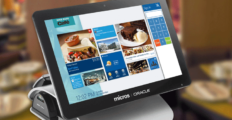
Source: pixabay
Market research firm, Persistence Market Research (PMR), has released a report on the global courier software market. The report projects the market to reach $1.4 billion by 2032. The growth will be at a CAGR of 10% over the period 2022 to 2032. Market experts expect SaaS-based logistics platforms to dominate the market.
A key growth driver is the popularity of ecommerce. Companies are increasingly adopting courier software as an essential tool for their operations. The software is not only for the delivery of products but also for customer communication and real-time visibility.
Another key driver is the integration of smart technologies into courier services. The digital transformation of business is pushing more companies to adopt apps and store their data in the cloud. Apps that can be accessed via smartphones and tablets also make it more convenient for companies to manage courier services.
Opportunities and Challenges in the Market
The report cited online shopping practices as a lucrative opportunity for courier software vendors. Online shopping fuels ecommerce platforms that need efficient courier solutions. To attract more users, key players in the market are taking various initiatives to improve their platforms. For example, they’re focusing on features that help ease delivery systems. These initiatives will further boost market growth. Also, experts see acquisitions by top players in the market as something that will drive expansion.
Several factors will contribute to the challenges of the market. These include the high cost of using courier software, poor connectivity and downtimes, and data breaches. High costs could turn away potential customers, while poor connectivity results in the loss of real-time monitoring. Data breaches, on the other hand, could slow down expansion. Data breaches are a growing problem in the software and IT industry worldwide.
SaaS in Courier Management
As we learned from the report, SaaS will have the most significant share in the courier software market. Businesses know that it’s now a necessity to have an online shop to reach more customers. The COVID-19 pandemic also accelerated the transition of companies online. As a result, ecommerce trends show that 43% of businesses will continue to use ecommerce to diversify their revenue streams.
With more businesses going online, SaaS courier software vendors are in a good position to provide efficient delivery management systems. Businesses, especially SMEs and solopreneurs, can easily benefit from using a robust delivery system without investing in expensive IT infrastructure. This levels the playing field for sellers and allows even mom-and-pop stores to serve customers outside of their area.
However, the report did mention the high cost of using software solutions. The SaaS business model often works on tiered pricing, so it’s considered a more fitting solution for most small businesses. But courier software could still get expensive, especially if it’s full of features that users will not be able to maximize in their daily operations. Therefore, vendors could offer customized pricing to address the challenge of high software costs.
Aside from the high cost, another issue the report mentioned was connectivity. We reported how governments worldwide are starting to roll out 5G and this will drastically improve cloud services; thus also improving the deployment of SaaS. But while 5G is still in the works, vendors should prioritize finding ways to improve their uptime and delivery. The report stated that troubles using a platform often occur when there are too many users accessing the app at the same time. These glitches and downtimes are the real challenges for SaaS developers and could result in customers looking elsewhere.






















Leave a comment!